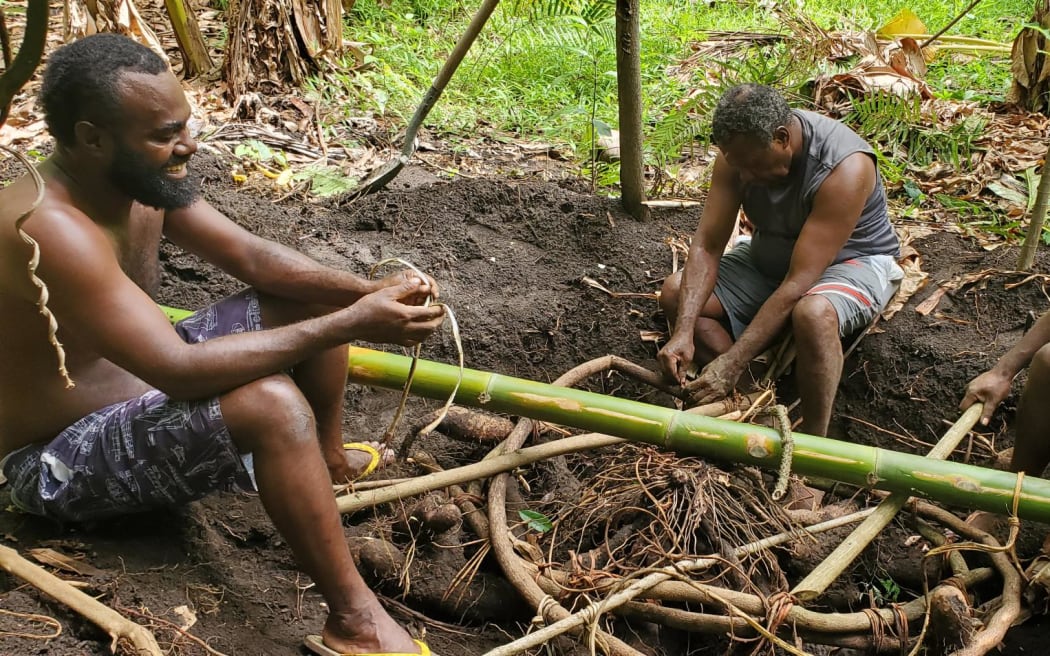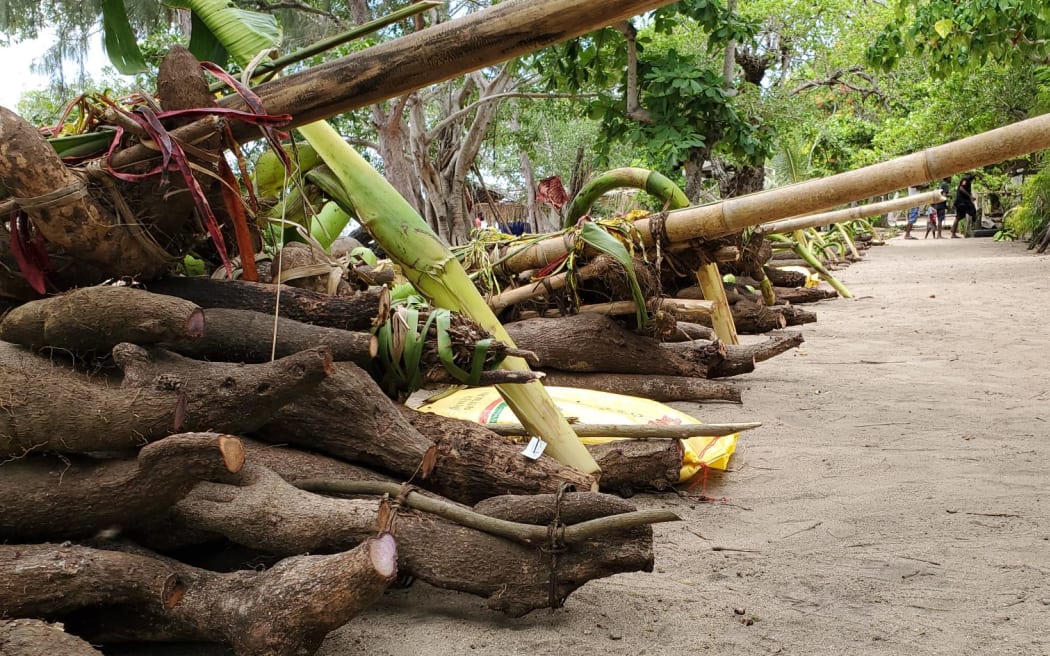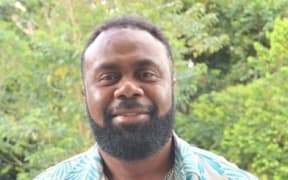By Philip Malsale*

There is tremendous value in our traditional knowledge, writes the author. Photo: Supplied / SPREP
Opinion - In the Pacific, our relationship with nature is a natural one. Nature is us, we are nature.
We use nature to meet our basic needs, food, water, clothing and shelter. We communicate through nature, we use it for medicine, transportation, music and entertainment. Generations have used those natural signs, which in today's world we refer to as traditional knowledge, to plan for the future.
As we encounter and confront modern challenges of today, the need to continue to cultivate this natural relationship with nature, and rely on our traditional knowledge becomes even more pertinent.
It is why I am excited about the work we do at the Secretariat of the Pacific Regional Environment Programme (SPREP), especially my role as the Senior Climatologist. One of the exciting works we have in the pipeline is looking at how to use traditional knowledge to hope and anticipate climate change, including climate variability and climate extremes, as well as ancillary traditional knowledge associated with food and water security, traditional ecological knowledge, environmental conservation, and settlement and house construction that represent coping strategies.
I can honestly say the work I am involved in today is something that has always fascinated me. I was born and raised in a chiefly family in Vilavi village in Uripiv Island, Malekula, Vanuatu. Malekula is an Island where culture is diverse. The diversity in the sense that a village that is a stone throw away has a totally different language. Uripiv Island is the same, but its linguistic influence is broader, and it covers most of the central Malekula. It has its own governance structure where families would labour for the chief to have a place to settle and have a say in the community.

Nature and weather patterns also taught us when was the best time to go fishing, and where to look for certain types of fish species, writes the author. Photo: Supplied / SPREP
The work for those new settlers can range from, collecting skulls, gardening, fishing to cleaning the village. Growing up in a village is a totally different world from the Port Vila and Luganville cities, so my daily activities of going to school, fishing, gardening or even community activities depended entire on nature and the weather.
We were taught to observe the cloud type and the colour of the sky during sunset for the next day's weather pattern. We were also told to use the position of the moon to determine whether a famine or drought was on the way, as well as the harvesting calendar.
The amount of fruiting of the mango tree determined the activeness of the cyclone season and the flowering of a certain mangrove species was used for determining cyclone strength. The wind direction also determined when a cyclone was approaching and when it would dissipate and leave.
Nature and weather patterns also taught us when was the best time to go fishing, and where to look for certain types of fish species. Generally, my community daily living depended entirely on traditional weather and climate indicators for their sustainable living.
It was human and nature co-existing in harmony. I used to think this was only the case in my village in Vanuatu but then I grew up and realised this was something shared across the Pacific.
Pacific migration also determined our journey course. Our ancestors read nature's signs to survive the weather and climate extreme events through our journeys prior to the introduction of modern weather and seasonal prediction.
When we talk about natural signs, we refer to how land, sea, air, astronomy and behaviours of flora and fauna changes over a short and long period of time and their deviation from weather and climate normal. This is how our ancestors lived in harmony with nature until modern technology was introduced by explorers, traders, and missionaries. They set up modern weather observation systems
and recorded data in diaries, ship logs and old field books that were archived in libraries far away from our people. When many Pacific Islands later gained independence, they continued the practise of data recording of weather and climate, and eventually set up the National Meteorological and Hydrological Services (NHMS) as west ministerial system of governance was favoured over our
traditional governance. These new systems came in at the expense of documenting and keeping records of our natural way of living, our traditional knowledge, especially in relation to weather and climate forecasting.
As a result, those practises slowly declined over the years as elderlies passed on and Pacific Islands became more dependent on technology and modern science. Fortunately, things are changing and there is now recognition internationally that our traditional knowledge, as Pacific people, can assist technology and science in the development space in our region.

Things are changing and there is now recognition internationally that our traditional knowledge, as Pacific people, can assist technology and science in the development space in our region, the author writes. Photo: Supplied / SPREP
Yes there is tremendous value in our traditional knowledge, it makes a difference. I have seen in the past ten years a notable shift in the weather and climate space where TK has moved from a sexy word to use to fundraise to its application and acknowledgement in the development space. The opportunity to engage with TK in a bigger picture came about in early 2008 when DFAT funded Pacific Climate Change Science Programme (PCCSP) as part of the Australian's International Climate Change Adaptation Initiative was launched to meet high priority adaptation needs of vulnerable countries in the Asia-Pacific region, particularly Pacific Island nations and East Timor. The importance of weather and climate TK indicators grew over the years, and we have seen growing interest from NMHS about the topic.
This excites me. Growing up in Vilavi village, TK is in my DNA. Fresh from university many years ago, the first opportunity to apply and engage TK in my career was in early 2000 when I worked at the Vanuatu Meteorology and Geo-Hazards Department (VMGD), formerly known as the Vanuatu Meteorological Services (VMS). Vanuatu was only twenty years old after gaining independence from British and France. One of the challenges we faced was communicating the weather and climate information to communities with over 144 languages for decision making.
During those days, my father, Oted Malsale, was instrumental in challenging me to start including weather and climate related science to the VMS weather and climate information bulletin. I briefly used this in my cyclone research and mentioned how TK knowledge on wind direction, speed related to high tides determine the location and strength of cyclone in relation to Uripiv Island. Vanuatu, and many Pacific island countries, have come in leaps and bounds since then.
Looking ahead, I believe that if our leaders want to manoeuvre our course through the changing climate, Governments need to start re-adjusting how they do business at the national, provincial, district and village level to ensure that TK knowledge is not lost. There is need and urgency for documenting TK indicators in weather and climate in all countries, and collecting that information is the foundation.
It means government institutions need to make this a priority that is reflected in their policy, planning, budget and human resources. NMHS on the other hand, need to realign their work and programmes to have modern science and TK work/activities in parallel with the existing programmes.

Philip Malsale Photo: Supplied / SPREP
For sustainability, in all divisions of NMHS such as observation, weather forecasting, climate division, Geo-Hazards, IT, training, TK needs to be included. For example, all the divisions mentioned, there should be inclusion of TK in weather observation/monitoring, weather forecast, seasonal forecasting, geo-hazards monitoring. Once we have a good set up in place, then we can look at how we monitor the TK indicators using modern technology. At the same time, research and develop a methodology to combine the two sciences (TK and modern science).
The future want
In the next 30 years, I want to see weather and climate information including TK have high correlation with high skill level and verification and fully utilise in all NMHS information and warning bulletin. This will eventually mean that Pacific Islands will have TK national and regional weather and climate indicators for extreme events such as rainfall, cyclone, drought, flooding, extreme temperature, earthquake, tsunami, and volcanic eruption.
If this is achieved in the near future, the Pacific region will be more resilient not only to weather and climate extreme events, but also to long term climate change. This will be the moment, I will sit back under a salsal near the beach on Vilavi village, Uripiv Island, drinking my first shell of kava, looking out to the ocean with the sun setting over the grey mountains of Aope and Lambubu, and be
satisfied knowing that wisdom and knowledge gained from the chiefly drink had made a difference in the Pacific region through the TK weather and climate indicators.
Our people derive their own methodology to combine their rich traditions with modern science to live sustainably in a changing climate. That is the future we want.
*Philip Malsaleis from Vanuatu. He works at SPREP, as the senior climatologist. Malsale is a contributing author to the traditional knowledge for climate resilience in the Pacific Islands paper published by Wiley Periodicals LLC.

